
Soul Edge is a fighting game developed by the Namco team Project Soul and published by Namco as the first installment in the Soulcalibur series of 3D fighting games. Introduced at the JAMMA trade show in November 1995, the full arcade game was released in early 1996, while later in December an upgraded and expanded version of the game was ported to the PlayStation. The PlayStation version was renamed Soul Blade in North America, Europe, and Australia.

Secret of Mana, originally released in Japan as Seiken Densetsu 2, is a 1993 action role-playing game developed and published by Square for the Super Nintendo Entertainment System. It is the sequel to the 1991 game Seiken Densetsu, released in North America as Final Fantasy Adventure and in Europe as Mystic Quest, and it was the first Seiken Densetsu title to be marketed as part of the Mana series rather than the Final Fantasy series. Set in a high fantasy universe, the game follows three heroes as they attempt to prevent an empire from conquering the world with the power of an ancient flying fortress.
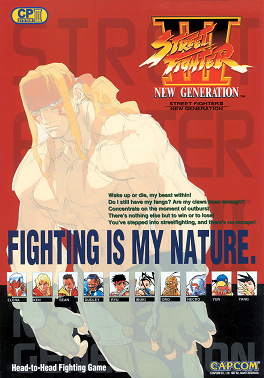
Street Fighter III: New Generation is a fighting game in Capcom's Street Fighter series, originally released as a coin-operated arcade game in 1997. The game's name as it appears on the cabinet is Three: A New Generation of Street Fighters. Street Fighter III was produced for the CD-ROM-based CP System III hardware, which allowed for more elaborate 2D graphics than the CPS II-based Street Fighter Alpha games, while revamping many of the play mechanics. The game, which was designed as a direct sequel to Street Fighter II, initially discarded every previous character except for Ryu and Ken, introducing an all-new roster led by Alex. Likewise, a new antagonist named Gill took over M. Bison's role from the previous games as the new boss character.
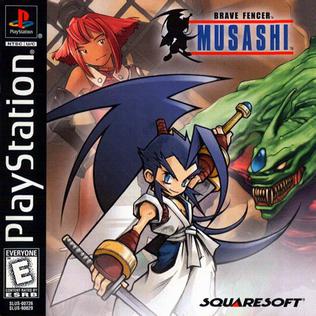
Brave Fencer Musashi is an action role-playing video game developed and published by Square in 1998 for the PlayStation home console. The game involves real-time sword-based combat in a 3D environment; it also features segments of voiced over dialogue and role-playing game elements such as a day-night cycle and resting to restore energy.
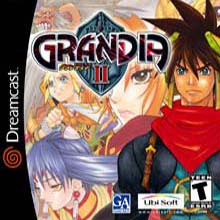
Grandia II is a role-playing video game developed by Game Arts originally for the Dreamcast console as part of their Grandia series. Initially released in Japan in August 2000 by Game Arts, the game was later made available in English for North America the following December and in Europe in February 2001, with both releases published by Ubi Soft. The game was later ported to Sony PlayStation 2, where it was released worldwide throughout 2002, and for Microsoft Windows exclusively in North America and Europe later that year.
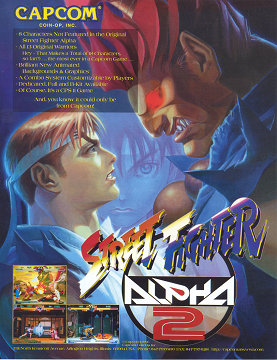
Street Fighter Alpha 2, known as Street Fighter Zero 2 in Japan, Asia, South America, and Oceania, is a 1996 fighting game originally released for the CPS II arcade hardware by Capcom. The game is a remake to the previous year's Street Fighter Alpha: Warriors' Dreams. The game features a number of improvements over the original, such as new attacks, stages, endings, and gameplay features. It was followed by Street Fighter Alpha 3.

X-Men: Children of the Atom is an arcade game that was produced by Capcom and released on the CP System II arcade hardware in 1994 in Japan and in 1995 in North America and Europe.

Urban Reign is a multiplayer beat 'em up game developed and published by Namco in 2005 exclusively for the PlayStation 2.

Digimon Rumble Arena is a 2001 fighting video game developed and published by Bandai. It is part of a video game series connected to the Digimon franchise and showcases the titular creatures within the context of a fighting video game. The player controls one of several Digimon and engages in combat with other Digimon within a variety of settings. Apart from the central fighting gameplay, a trio of mini-games are available upon the single-player campaign's completion.
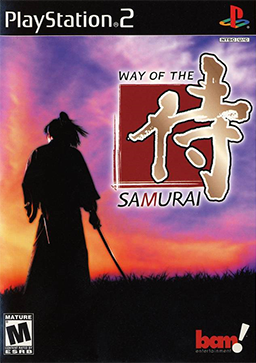
Way of the Samurai, known in Japan as Samurai (侍), is a PlayStation 2 action-adventure game developed by Acquire and released in 2002.

Summoner 2 is an action role-playing game developed by Volition and published by THQ as the sequel to Summoner. It was originally released for PlayStation 2 in 2002 and was re-released for the GameCube in 2003 with some visual changes as Summoner: A Goddess Reborn. The game features improved visuals and a more real-time, action-oriented combat system from the original.

Evergrace is a 2000 action role-playing game developed by FromSoftware for the PlayStation 2 (PS2). It was released in Japan in April 2000 by FromSoftware, North America by Agetec in October 2000 as a launch title for the PS2 in the region and PAL territories in January 2001 by Ubisoft and Crave Entertainment.

Street Fighter EX2 is a 2D head-to-head fighting game with 3D graphics co-produced by Capcom and Arika and originally released in 1998 as a coin-operated arcade game for the Sony ZN-2 hardware. It is the sequel to the original Street Fighter EX, a 3D spin-off of the Street Fighter series. An updated version of the game titled Street Fighter EX2 Plus was released in 1999 in arcades as well and subsequently ported to the PlayStation the same year.

Bloody Roar Extreme, or Bloody Roar: Primal Fury as it is known outside of its Japan release for the GameCube, is a fighting game developed by Eighting released in 2002 for the Nintendo GameCube. It was later ported to the Microsoft Xbox under the original moniker of Bloody Roar Extreme in 2003.

Hoshigami: Ruining Blue Earth is a tactical role-playing game (RPG) developed by MaxFive and published by Atlus USA in 2001, and by the former in Japan in 2002. The game was never released in Europe or Australia. The game was remade as Hoshigami: Ruining Blue Earth Remix for the Nintendo DS in 2007 by Arc System Works.

The Sword of Etheria is an action role-playing game developed and published by Konami Computer Entertainment Tokyo. It was originally released on June 30, 2005 for PlayStation 2 as OZ in Japan, and as Chains of Power in Korea, followed by its release in Europe on February 24, 2006. The game was not released in North America. It was reprinted in Japan on January 26, 2006 as part of the "Konami the Best" budget label.
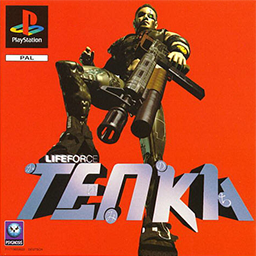
Lifeforce Tenka is a first-person shooter for PC and PlayStation released in 1997 by Psygnosis. It is also known as just "Tenka" in some other forms of release.

Street Fighter Alpha: Warriors' Dreams, known as Street Fighter Zero in Japan, Asia, South America, and Oceania, is a 2D arcade fighting game by Capcom originally released in 1995 for the CP System II hardware. It was the first all new Street Fighter game produced by Capcom since the release of Street Fighter II in 1991. The working title for the game was Street Fighter Legends.

King's Field IV, released in North America as King's Field: The Ancient City, is an action role-playing video game developed by FromSoftware for the PlayStation 2 in 2001. It is the fourth and final game in the King's Field series. It was released in North America by Agetec in 2002 and in Europe by Metro3D in 2003.
Guilty Gear is a series of fighting games by Arc System Works, created and designed by artist Daisuke Ishiwatari. The first game was published in 1998, and has spawned several sequels. It has also adapted to other media such as manga and drama CD. Guilty Gear has generally received praise from video game reviewers for its highly technical gameplay, graphics, soundtrack, and for its characters. Another fighting game franchise by Arc System Works, BlazBlue, is considered a spiritual successor of the series.



















